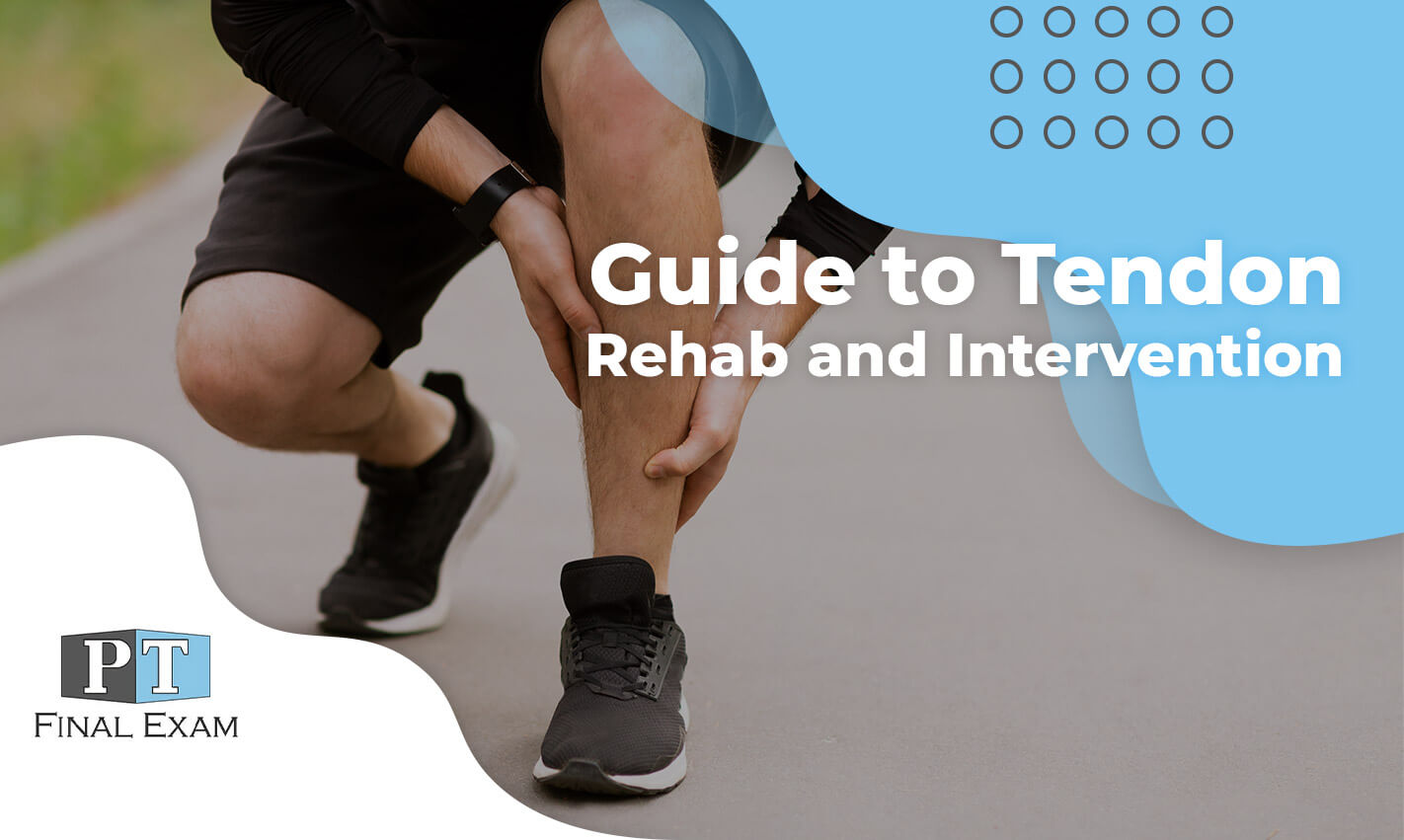Editor’s Note: I have received multiple questions lately about the “Interventions” category on the NPTE. I feel that this is a great weakness in the current test preparation literature. My purpose is to provide a general framework for interventions.
[button size=”medium” link=”/” style=”solid” icon=”laptop” link=”https://ptfinalexam.com/wp-content/uploads/2013/08/Tendon-Injuries.pdf” bg_color=”#606060″ text_color=”#ffffff linking=”default”]Download PDF Version[/button]
A Brief Overview of Tendon Rehabilitation
Will Crane, DPT
Tendon Injuries (the healing process)
Among the many different kinds of injuries that physical therapists treat, tendon injuries can be some of the most common. Although they are ubiquitous, there appears to be a lack of congruency in treatment for these individuals. Certainly there are many different types of tedinous injuries, and all require an individual approach. The purpose in creating this guide is to establish certain commonalities among the entire myriad of tendon injuries. Although intended to be simplistic and easy to follow, this guide is not meant to be a “cookbook” approach to therapy. Having a deep understanding of tendon healing will lead to a more unified approach to its treatment. There are numerous factors that will alter these guidelines, including age, severity, and other complicating conditions.
Tendon Anatomy
Tendons have the highest tensile strength of all connective tissue and are the primary linkages between muscle tissue and bony insertion. Tendons are made of closely packed parallel fibers that contain approximately 75% collagen. Collagen in synthesized by the tenocytes of the tendon and is formed into long parallel triple-helical polypeptide chains. These chains contribute to the overall tensile strength of the tendon. The collagen fibers are bound into fascicles by endotenon and then into larger fascicles by the epitenon. The paratenon envelopes the entire tendon and acts as a sheath to provide lubrication to the structure.
Tendons can withstand great tensile force and have a linear stress-strain curve.
Tendon Healing
Tendon healing can be divided into 3 different stages: Inflammatory, proliferative, and remodeling.
Inflammatory
The initial hematoma that forms at the injury site stimulate a standard inflammatory response, including vasodilators, proimflammatory agents, erythrocytes, macrophages, angiogenic factors, and phagocytes. This is essentially the “stop the bleeding” and “clean-up” stage. This occurs between 3-7 days after the injury.
Proliferative
This is primarily the stage of recruitment of fibroblasts to the area to recreate the extracellular matrix and collagen fibers. The inflammatory products dwindle, and the tendon is left with an increase in water and ECM and begins to appear as a scarred tendon. This occurs between Day 5 and Week 5
Remodeling
By 6-8 weeks, the fibroblasts begin to recede and the tendon begins to produce collagen fibers in longitudinal patterns to reproduce the tensile properties of the original structure. However, the tendon strength and stiffness does not fully achieve the characteristics of a normal tendon.
General Guidelines for Tendon Intervention
As mentioned previously, severity and age can be important factors to consider when creating a treatment program. Many protocols also call for a more conservative approach depending on tissue integrity and other complicating conditions. The judgment and skill of a trained physical therapist is required.
Tendonitis/Overuse Injuries
- Remove offending activity
- Follow tissue healing guidelines
- Days 1-7
- PROM, AAROM (if tolerated), no loading
- Modalities (“stop the bleeding”)
- Days 1-7
- Days 7-Week 5
- Progressive addition of load from PROM to AAROM to AROM as tolerated
- Avoid adhesions between tendon and paratenon
- Provide cardiovascular perfusion to area (train well-leg/arm, increase heart rate and perfusion)
- Weeks 6-Month 6
- Progressively load tendon from AROM to Resisted ROM
- This can include isometric, isotonic, isokinetic, and eccentric work
- GRADUAL and progressive loading as tolerated.
Surgical Repair
- Follow surgeon’s recommendations
- Avoid ALL LOADING of tendon initially
- Days 1-14 (increased time due to severity of injury)
- PROM, AAROM if approved by surgeon
- Modalities as needed
- Days 1-14 (increased time due to severity of injury)
- Days 14-Week 6
- Progress to AAROM and AROM
- Avoid adhesions (especially adhesive capsulitis in the shoulder)
- Week 6-Month 6
- Gradually add load. Follow a stepwise pattern of increasing loading through tendon.
- Progress to resisted motion and functional activities.
Conclusion
While there exist many different specific protocols, this will serve as a general guide to tendon healing. Prudence and skilled care are a requisite for treatment of all tendon injuries as well as patient compliance and cooperation. Patients should always progress gradually through their program and avoid reinjury.
References:
Br J Sports Med 2002;36:315–316
J Hand Surg 2008;33A:102–112
Brotzman, Wilk, Handbook of Orthopaedic Rehabilitation,Mosby, Inc., 2007
Liu SH, Yang RS, al-Shaikh R, Lane JM. Collagen in tendon, ligament, and bone healing. A current review. Clin Orthop Relat Res 1995;318:265–278.
Fenwick SA, Hazleman BL, Riley GP. The vasculature and its role in the damaged and healing tendon. Arthritis Res 2002;4:252–260.
Sharma P, Maffulli N. Basic biology of tendon injury and healing. Surgeon 2005;3:309 –316.


1 thought on “Guide to Tendon Rehab and Intervention”
Thank you for sharing,I found this to be quite helpful.
Actually your entire website is.
Again appreciate the effort. c:
Comments are closed.